Sandi Wysock
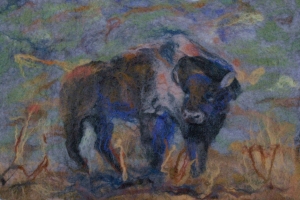
King of the Prairie
Figurative Fiber Art
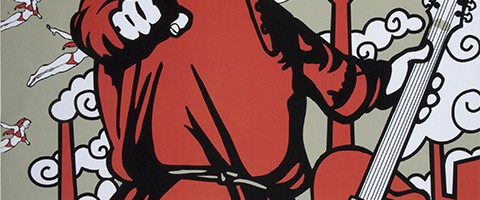
Artist Unknown
These posters are part of a group of about 100 I collected in 1997, when my wife Beth was a visiting professor at Aristotle University in Thessaloniki, Greece. That year, Thessaloniki was designated the Cultural Capital of Europe. Cultural events occurred throughout the year, and I am sure I attended at least one every other day during the six months we lived there. Posters were displayed at almost every event and, naturally, I had to collect them. Luckily, friends at the Cultural Capital Headquarters saved me copies of posters I somehow missed.
My time in Greece and Slovakia coincided with the opening of East and West relations in Europe. Back then, westerners had just begun to develop an interest in Eastern photographs. I was invited to Bratislava, Slovakia, during that time, where I attended a photo festival. This Photo Festival inspired me to establish a bi-annual photography festival in Madison, now known as Photo Midwest.
That was also the year I met Annie Leibovitz, a famous American portrait photographer, as well as several artists who eventually came to exhibit their work at Promega. I was fortunate enough to spend days in Bratislava with Annie, as most people there did not know of her fame.
Daniel Swadener and Annie Leibovitz, Slovakia, 1997
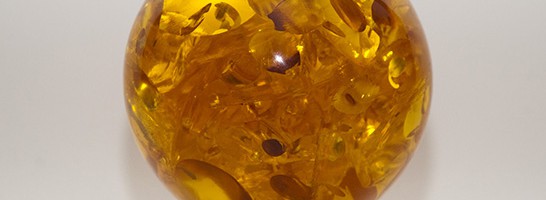
Artist Unknown
Amber is fossilized tree resin, distinguished by its unique color and natural beauty. It has been valued as a gemstone for centuries and is often used in the making of decorative objects, such as this globe. Because amber originates as a soft, sticky tree resin, it can contain animal and plant materials in its composition.
This Amber Globe comprises the largest piece of amber I have seen. The sheer size of the amber and the delicacy and smoothness of the carving work is what first attracted me to the piece. I acquired it at an estate sale in Sedona, Arizona.
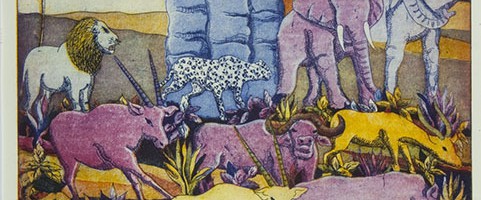
Robino Ntila
Robino Ntila is an artist based in Tanzania. He works with artists all over Africa, conducting printmaking workshops, mostly with the support of the Ford Foundation. He has taught many artists how to print, helping them market their work in the process.
Robino worked closely with the famous Makonde artist George Lilanga, teaching him the art of printing. Lilanga, one of the few early carvers able to transition from three-dimensional to two-dimensional work, made the transition from carver to visual artist in a movement called Tinga Tinga. His distinct style characterized the start of the movement in Tanzania, one which Ntila continues today, alongside Lilanga’s son.
I met Robino Ntila in Nairobi in 1994. I have more than one hundred Ntila prints, as the artist used to send them to me once a year. Today, Ntila has taken to painting, and thus no longer sends me etchings.
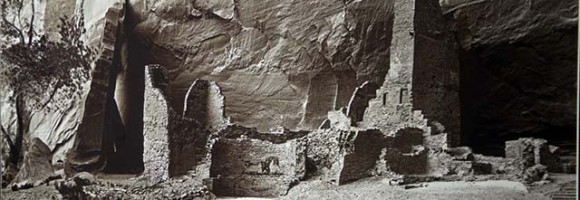
LeRoy DeJolie, 2005
LeRoy DeJolie is a Navajo photographer who has done work for the magazine Arizona Highways. Simeon Schwemberger was a Catholic monk who lived on the Navajo reservation one hundred years ago. These two photographers, both with vastly different backgrounds, worked in the same place one century apart. Their work would likely make a great scholastic study in contrast of insider/outsider perspectives of life on the Navajo Reservation.
By displaying these two photographs, I attempt to show how much has changed in one hundred years. In inspecting the photographs it is obvious the newer photo shows improvements in the ruins. I question the occurrence of these improvements on protected ground.
Learn more about Leroy DeJolie and Simeon Schwemberger.
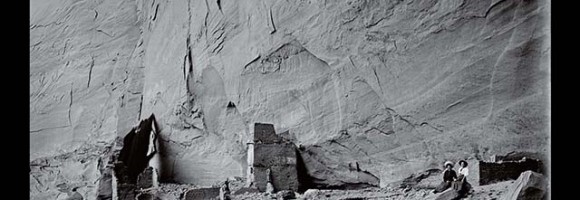
Simeon Schwemberger, circa 1910
LeRoy DeJolie is a Navajo photographer who has done work for the magazine Arizona Highways. Simeon Schwemberger was a Catholic monk who lived on the Navajo reservation one hundred years ago. These two photographers, both with vastly different backgrounds, worked in the same place one century apart. Their work would likely make a great scholastic study in contrast of insider/outsider perspectives of life on the Navajo Reservation.
By displaying these two photographs, I attempt to show how much has changed in one hundred years. In inspecting the photographs it is obvious the newer photo shows improvements in the ruins. I question the occurrence of these improvements on protected ground.
Learn more about Leroy DeJolie and Simeon Schwemberger.
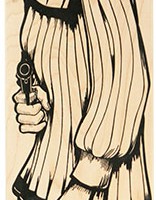
Douglas Miles
Douglas Miles exhibited his work and that of several young artists, Native Agents, at Promega in 2008.
Although Douglas does not spend much time on a skateboard today, he continues to pass down traditions and share his experiences with the next generation of artists. His projects often involve young designers, some of which he mentors and supports. The list of established artists he has taught is quite impressive and continues to grow.